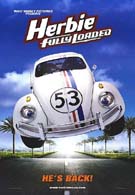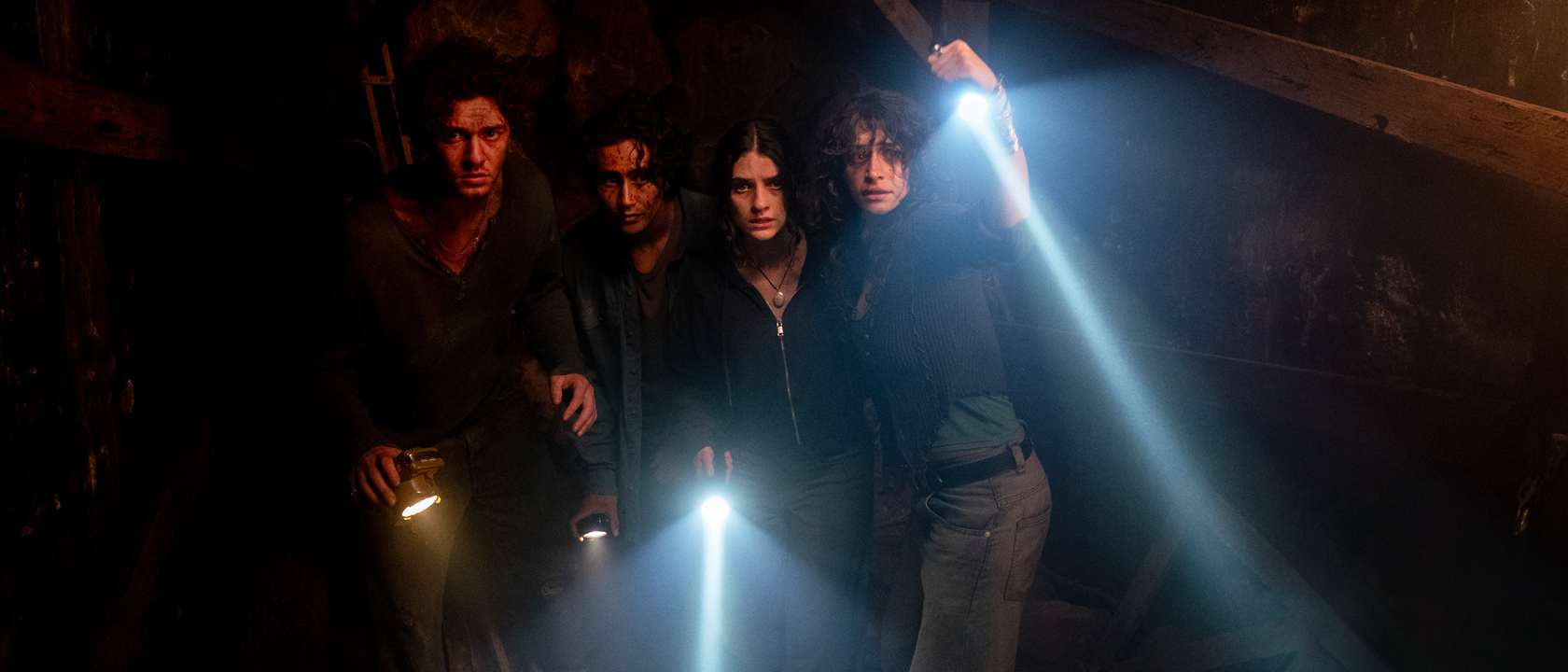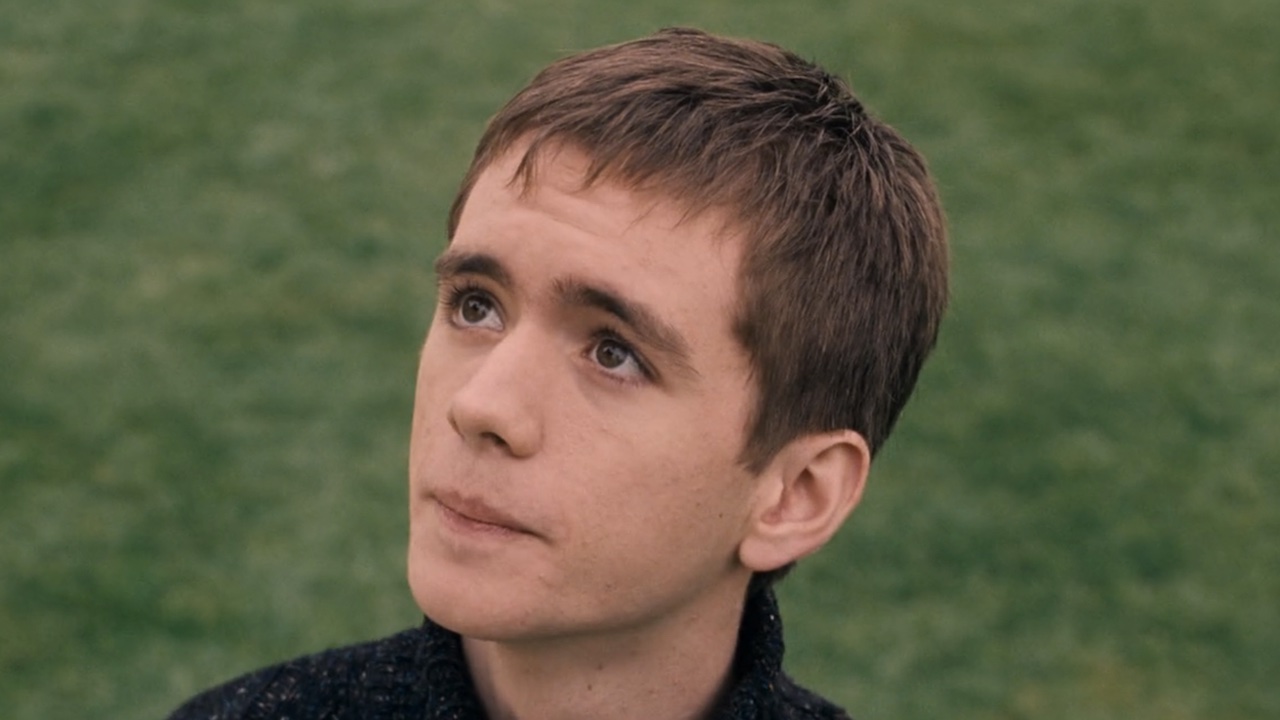Like most of Disney’s best family films, the Herbie series didn’t start out geared solely for children. Released in 1968, The Love Bug featured well developed adult characters dealing with pretty heavy issues. In the film, race car driver Jim Douglas (Dean Jones) struggles with his own pride and a deep seated fear of failure. With Herbie, he wins races but he has to come to grips with the fact that it isn’t because of his driving. He pushes the strange little car away, screams at it, tries to replace it with a flashy racer. Herbie, in a fit of jealousy repeatedly rams Jim’s shiny new sports car, and after a bitter moment between the two (even though Herbie can’t talk, somehow he says volumes with a beep) Jim casts Herbie off into the streets on his own where the little car, in a gut wrenching scene tries to commit suicide. Pretty serious stuff for a movie about a self-aware Volkswagen.
But that was part of what was great about those old movies, they took the character seriously. Herbie wasn’t some mysterious, magicked creature with eerie powers; he’s more like a normal car, one that just happens to have a whole lot of heart. He’s the little car that could, he wins races not because he has special super-powers, but because he’s got so much determination he wins through sheer force of will. That was always the beauty of Herbie; he wins because he wants it more than any other car on the race track. There’s never any real explanation for why Herbie became self aware, the brilliant Buddy Hackett as Tennessee Williams explains it simply as “something must have gotten caught up in the works”. When he says it, we know that something he’s talking about is pretty simple; it’s love. As a kid, watching all those Herbie movies I always assumed that Herbie was alive because we loved him. Like Tinkerbelle or the land of Fantasia, the Herbie of The Love Bug or Herbie Rides Again existed because we believed in him. Maybe that’s not a particularly logical explanation for how a 1963 Volkswagen Beetle could suddenly learn to drive itself, but it’s a pretty satisfying one.
The sad thing is that those days of great family films like that are long gone at Disney. They’re no longer in the business of complex, heart-warming, intelligent, family filmmaking. Today, Disney makes kids movies and if you don’t understand the difference then take a moment to pick up anything done by Pixar and compare it to the latest movies done solely by Disney. Disney’s modern product is watered down, dumbed-down, and filled with disappointing pandering. When was the last time you saw a Disney movie without a little kid in it? So it’s a shame that they’ve chosen now to bring back Herbie, when the once lustrous Disney studios have long since stopped shining brightly. They no longer have the wit or ability to understand an oddball little character like a VW Bug with the number 53 emblazoned proudly on his rather roundish hood.
The latest Herbie adventure is Herbie: Fully Loaded and thankfully they haven’t recast the car as one of those new Beetles. Instead, director Angela Robinson has stuck with him as the traditional 1963 Beetle, one of the few really good decisions made on this film. They’ve allowed good old Herbie to keep the same look, but as the movie’s title indicates he’s been updated; now he’s possessed by the Devil. Granted, his possession is more implied rather than outright stated, but there’s a moment in the film where Herbie does a disturbing impression of “Large Marge” in Pee Wee’s Big Adventure. If you remember that scene at all then you’ve got at least some idea where Satan comes in. That sort of behavior isn’t natural.
For me, the biggest problem with Herbie: Fully Loaded is that like most modern movies it’s too obsessed with delivering bigger, flashier effects and in the process loses a lot the subtleties of a pretty simplistic metal character. Because CGI exists, every movie director seems almost compelled to overuse it. Robinson uses it here to make Herbie do really annoying things like blink… constantly. Last I checked, cars don’t blink and even just throwing in that simple little effect completely undermines everything that’s great about the character. Herbie is no longer a normal car with a little something special somewhere down deep inside, now he’s a magical dream vehicle that has more in common with Harry Potter’s flying Rambler than the plucky racer a lot of us remember as part of our childhood. Through the dubious magic of CGI, you don’t have to guess what Herbie is thinking, you know since they’ve given him the ability to flex his bumper in something resembling a smile. He’s also no longer limited to communicating with humble horn beeps, the car grunts and whines and shakes almost constantly like some sort of physically abused puppy. Herbie is always making some sort of squawking squeaking noise and I have a feeling he’d get along pretty well with my beagle.
For this outing, Herbie’s been thrown for the first time into the world of NASCAR. Actually, that’s a move that makes some sense. NASCAR is huge and seeing Herbie take on a new type of racing could be fun. But once the car actually gets on the track, it’s bizarre. He doesn’t fit there and looks pretty uncomfortable amongst a bunch of stock cars. The races also aren’t very cinematic. Past Herbie movies had him racing in long, overland races against a motley collection of different vehicles. This presented plenty of opportunity for creative situations where Herb’s ability to drive himself might come in damn handy. Driving in circles for 500 miles in a race that lasts a couple of hours doesn’t have nearly the cinematic potential. The race footage is piss poor, and of course CGI comes into play again to make Herbie do the laughably ridiculous.
Perhaps the worst thing at work here is the script, written by no fewer than four different people. It smacks of screenwriting by committee, using a tired plot that I’ve already seen once before this year in another kids movie called Racing Stripes. It all ties back in to what I mentioned earlier, Disney’s complete inability to make films that’ll play to families, instead of just children. They’re pandering to little kids and so they do things like cast Lindsay Lohan as Herbie’s driver. Herbie’s most interesting stories (a stint in South American throwing bananas with a little kid who insisted on calling him Ocho notwithstanding) have all had him relating to adults. Herbie: Fully Loaded has him playing opposite a face that little kids are all familiar with rather than one that makes sense. She’s young and she’s cute and so we’re supposed to like her. Maybe I would have, had Disney not digitally reduced her bosom. Michael Keaton is in this film, and has not a single scene with Herbie. He has plenty of scenes watching Lindsay Lohan do exciting things though. I say toss out Lohan and get Keaton in the car. Then maybe you’d have a movie. From Batmobile to Beetle? Now that’s a story, and a sad commentary on Mr. Mom’s career.
Though Herbie: Fully Loaded is every bit as disappointing as you’d expect, there are times when it works. Whenever Herbie stops blinking and CGI’ing all over the place, he becomes good old number 53 again. The movie begins with a great opening sequence showing scenes from previous Herbie films, and a few newly made up video clips. The 80’s kid inside me grinned like an idiot when they show a three second shot of Herbie hanging out next to Michael Knight’s four-wheeled buddy K.I.T.T. for instance. Throw Airwolf into the picture hovering off in the distance while K.I.T.T. and Herbie are jumped by the General Lee and you’d have seen me go into a full on nerd-spasm. The movie isn’t completely without heart, and no matter how much CGI they slather on the Bug that could, this movie can’t completely destroy the character. Good old Herbie is in there somewhere, and seeing that number 53 on screen again in any form is a nostalgic treat for anyone who had him as a fixture in their childhood. Sadly, gone is the magic that made the Herbie films great family movies, in its place is the lame trappings of a modern, dumbed-down kids movie.











